Videos in Spanish created by Kremlin outlets reappear on YouTube despite restrictions
Multiple channels used same branding of restricted pro-Kremlin media, garnering thousands of subscribers and views in less than a month.
Videos in Spanish created by Kremlin outlets reappear on YouTube despite restrictions

BANNER: Ahí les Va! video featuring Inna Afinogenova that was re-uploaded to the YouTube channel SFP-ASP. (Source: SFP-ASP/archive)
Nearly fifty YouTube channels have reuploaded videos from RT en Español and Ahí Les Va! (“There it goes”), an RT-affiliated channel, despite the platform’s banning of RT after Russia’s invasion of Ukraine. Among these are seven new channels utilizing RT branding, which have garnered thousands of subscribers in a matter of weeks.
YouTube, along with other social media platforms, suspended access to channels connected to Russian state-owned media outlets across Europe on March 1, 2022, later expanding it to other regions, including Latin America. By March 11, 2022, YouTube had blocked access globally to over 1,000 YouTube channels connected to Russian state-funded RT and Sputnik. Amid Russia’s invasion of Ukraine, YouTube determined that the channels and more than 15,000 videos spread misinformation, hate speech, denied violent events, among other actions prohibited by its policies. RT en Español and Inna Afinogenova, a Russian journalist previously associated with RT and former presenter for Kremlin-backed channel Ahí Les Va!, confirmed that YouTube applied its ban against their channels targeting Spanish-speaking audiences in Spain and Latin America. On May 3, Afinogenova posted that she had resigned from RT because she does not support any war and did not want to be part of “the war propaganda.”
Spanish-language social media has become a significant space for conversations and narratives Russia’s invasion of Ukraine. On Twitter, for example, Spanish is the second most prevalent language discussing the war. Meanwhile, Spanish speakers are among the main targets of Kremlin-backed media internationally through its Spanish outlets RT en Español and Sputnik Mundo.
As Kremlin media began promoting their Spanish-language accounts on alternative social media video platforms such as VKontakte and Odysee, efforts to recuperate YouTube’s audiences continued, likely because the platform ranks second globally in terms of number of users, with only Facebook having a larger audience. Most of the new YouTube channels re-uploading Russian state media, however, have not regained the same reach and interactions that RT en Español and Ahí Les Va! previously gathered. These channels include newly created accounts and existing channels linked to Latin American fringe media. Some of the channels used similar names to match those to Actualidad RT and Ahí Les Va!
Over the course of its investigation, the DFRLab identified found forty-six YouTube channels that reuploaded and edited videos by RT en Español and Ahí les Va! between March 1 and April 5, 2022. Among these were seven new YouTube channels that had previously never posted.
Recovering a Spanish-speaking audience
According to social media listening tool Social Blade, by the time they were deplatformed by YouTube, RT en Español had accumulated 5.97 million subscribers and almost 4.5 billion views, while Ahí Les Va! had gathered 1.11 million subscribers and 108 million views. As shown in the graphs below, both channels experienced increases in the number of views and subscribers between January 2022 and their deplatforming after the invasion, with RT en Español experiencing a significant jump. The sudden drop shown for March 2022 was likely due to being deplatformed early that month rather than a decrease in user engagement. Therefore it is easily conceivable that the growth trend would have continued through March and beyond if the channels had not been banned.
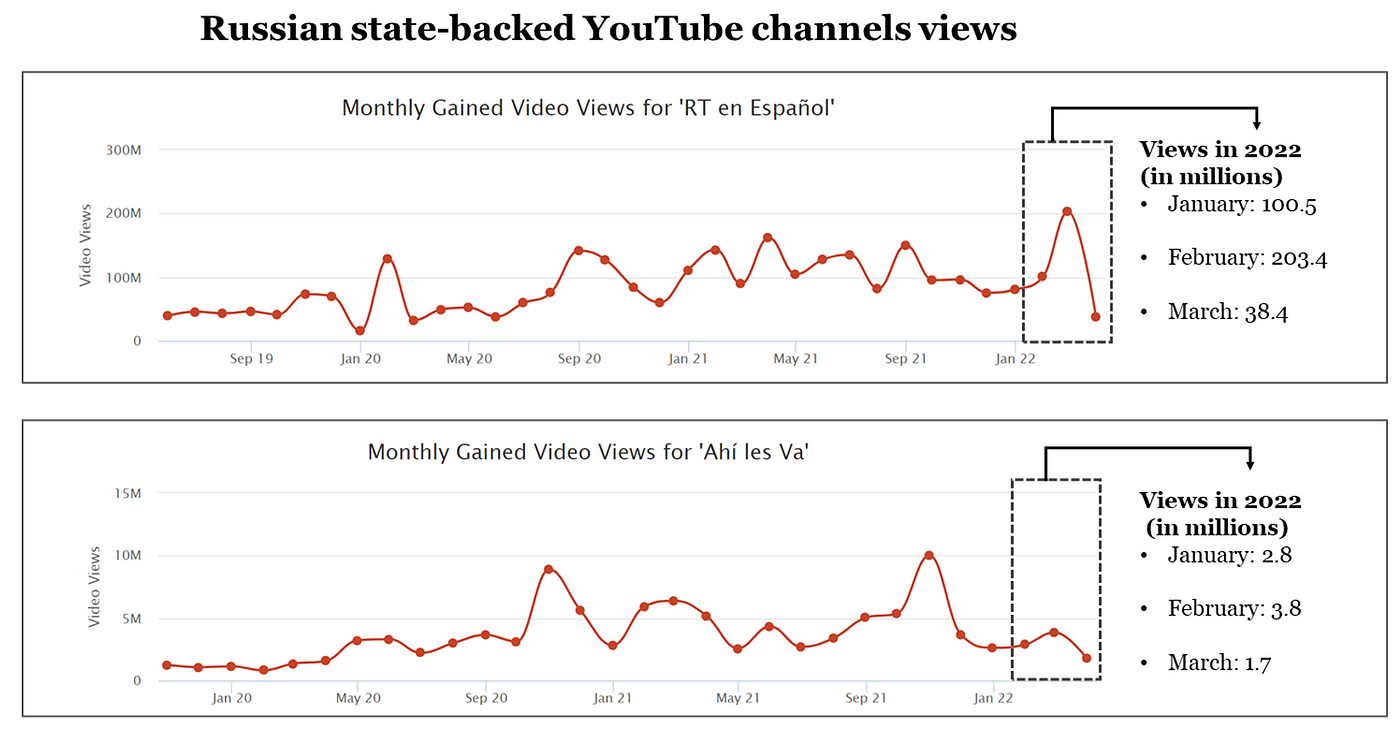
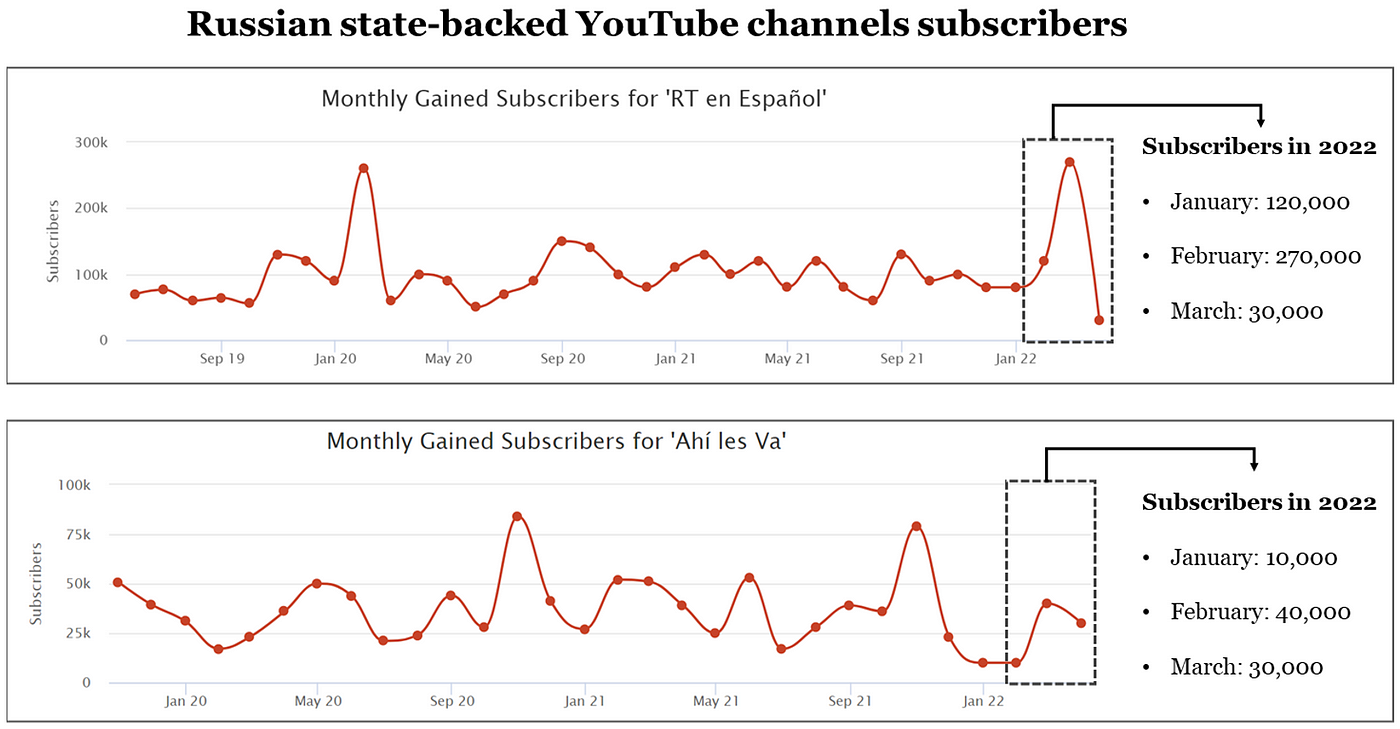
The seven new YouTube channels posted their first videos in March 2022, and impersonated the now-banned Kremlin-backed channels by using their channel name or picture, suggesting the accounts went live in response to the ban. Of these new channels, Ahí les Va… RT! amassed the most views — more than 101,000 views at the time of publishing — while the similarly named Ahí Les Va gained more than 16,000 subscribers. Four of the seven new channels belonged to Google accounts that joined YouTube between March 12 and March 29, 2022.

Ahí Les Va, the channel with the most subscribers in the set, only included RT’s name in its description and posted its first video on March 12. The channel reuploaded a video posted by the original Ahí les Va! account from March 1. The video showed Inna Afinogenova condemning YouTube’s restrictions in Europe; she then invited viewers in banned regions to download the video and share it through messaging apps.
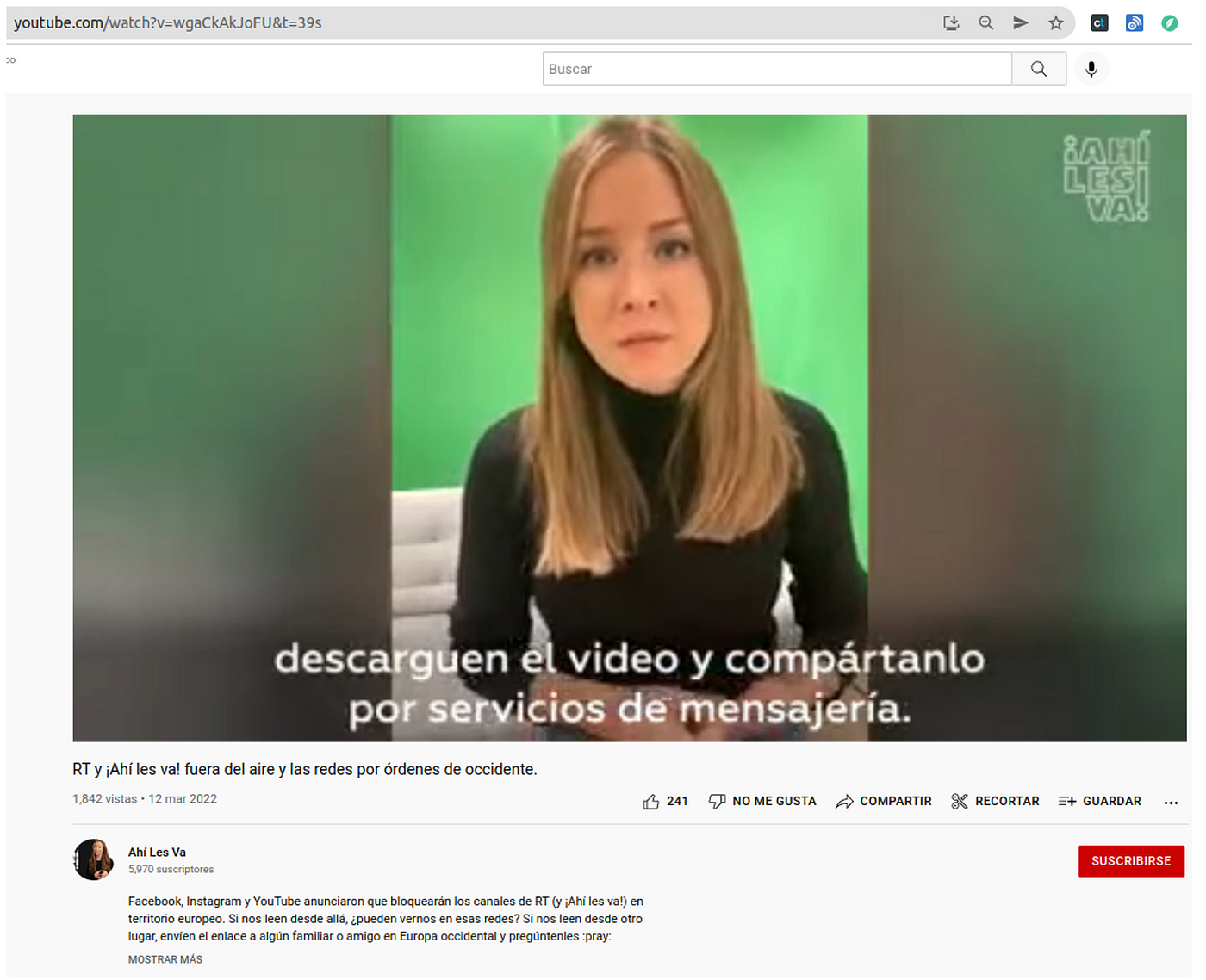
A query using Social Blade indicated that Ahí les Va… RT!uploaded 204 YouTube Shorts and videos that contained original videos and edited clips from RT en Español and Ahí Les Va! between March 15 and April 6, 2022. Ahí les Va… RT! described itself as a channel that will share “all censored” content and will respond strongly.
Actualidad RT joined YouTube on March 29, 2022, and was the only channel in the list that tried to replace the official YouTube channel of RT en Español; the other channels all reposted Ahí les Va! content. The channel actualidad RT used the same handle and logo that RT en Español used on other platforms, such as Twitter.
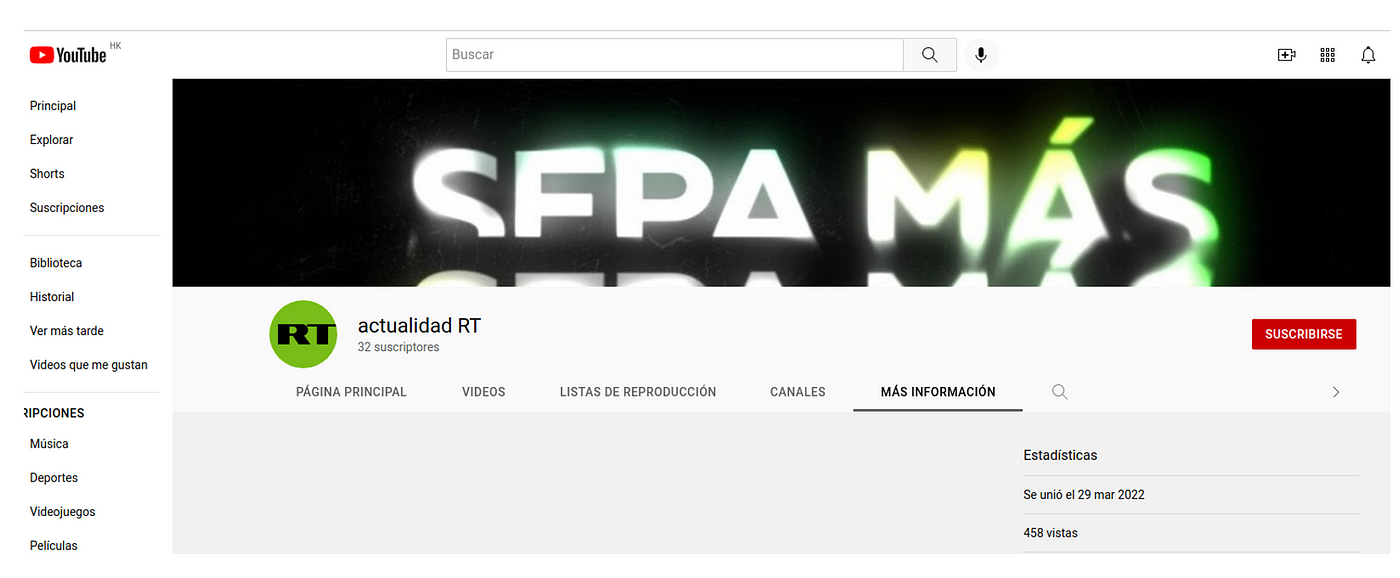
YouTube has suspended the channels Ahí les Va… RT! and actualidad RT.
Pro-Kremlin YouTubers defy YouTube’s ban
The DFRLab identified that the remaining thirty-nine channels mostly uploaded content related to video games, music, travels, news, Latin American governments, and political organizations. Most of the channels followed the same pattern of changing the content of their videos by reuploading at least one of the videos by RT en Español and Ahí les Va! after YouTube announced restrictions on March 1.
Of the channels in the subset, SFP-ASP had the most subscribers — more than 55,000 at the time of publishing. The channel, which describes itself as focusing on “Photography, Video & Journalism Production,” belongs to Sergio Falconi-Parker, an Ecuadorian photojournalist based in Berlin. On March 1, SFP-ASP re-uploaded the Ahí les Va! video in which Inna Afinogenova asked viewers to share it using messaging apps. As of May 5, the SFP-ASP upload of the video had garnered over 57,000 views.
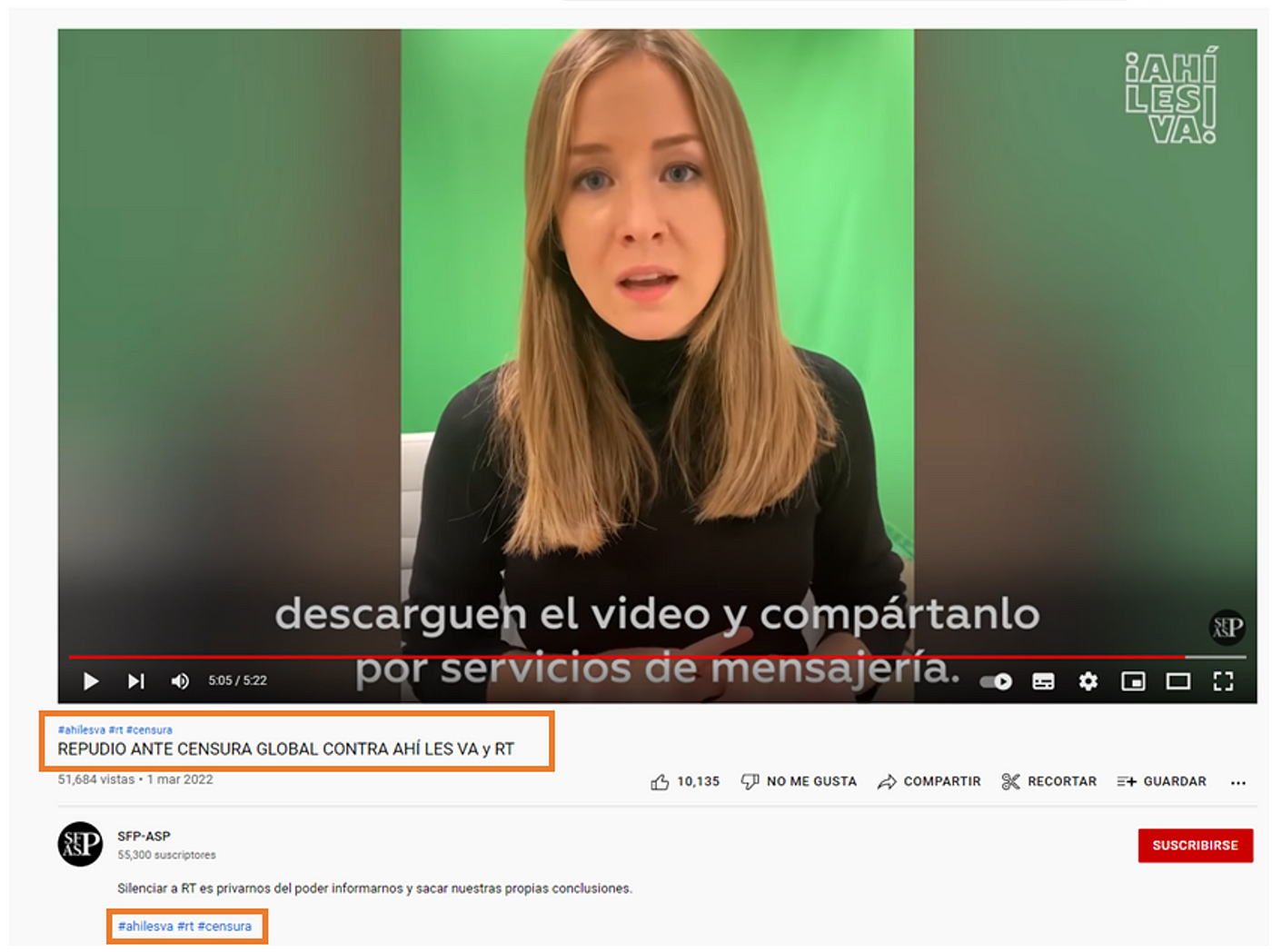
On Twitter, Falconi-Parker promoted Ahí les Va!’s Odysee account and touted that the re-uploaded videos from RT en Español and Ahí les Va! on his YouTube channel had garnered nearly 500,000 views and a significant number of likes.
MikeX was the channel with the most views in the subset (almost 9.5 million) and the second-most subscribers (19,000). MikeX, MikeXTRA (second-most views), and Contacto Sur were the only channels in the subset that reuploaded videos from pro-Kremlin media prior to YouTube’s ban.

Given the similarity in name and content, and the shared connections between the two, MikeX and MikeXTRA are quite possibly run by the same operator, though the DFRLab could not definitively connect them. Both channels posted content supporting Argentinian president Alberto Fernández and reuploaded the same RT videos.
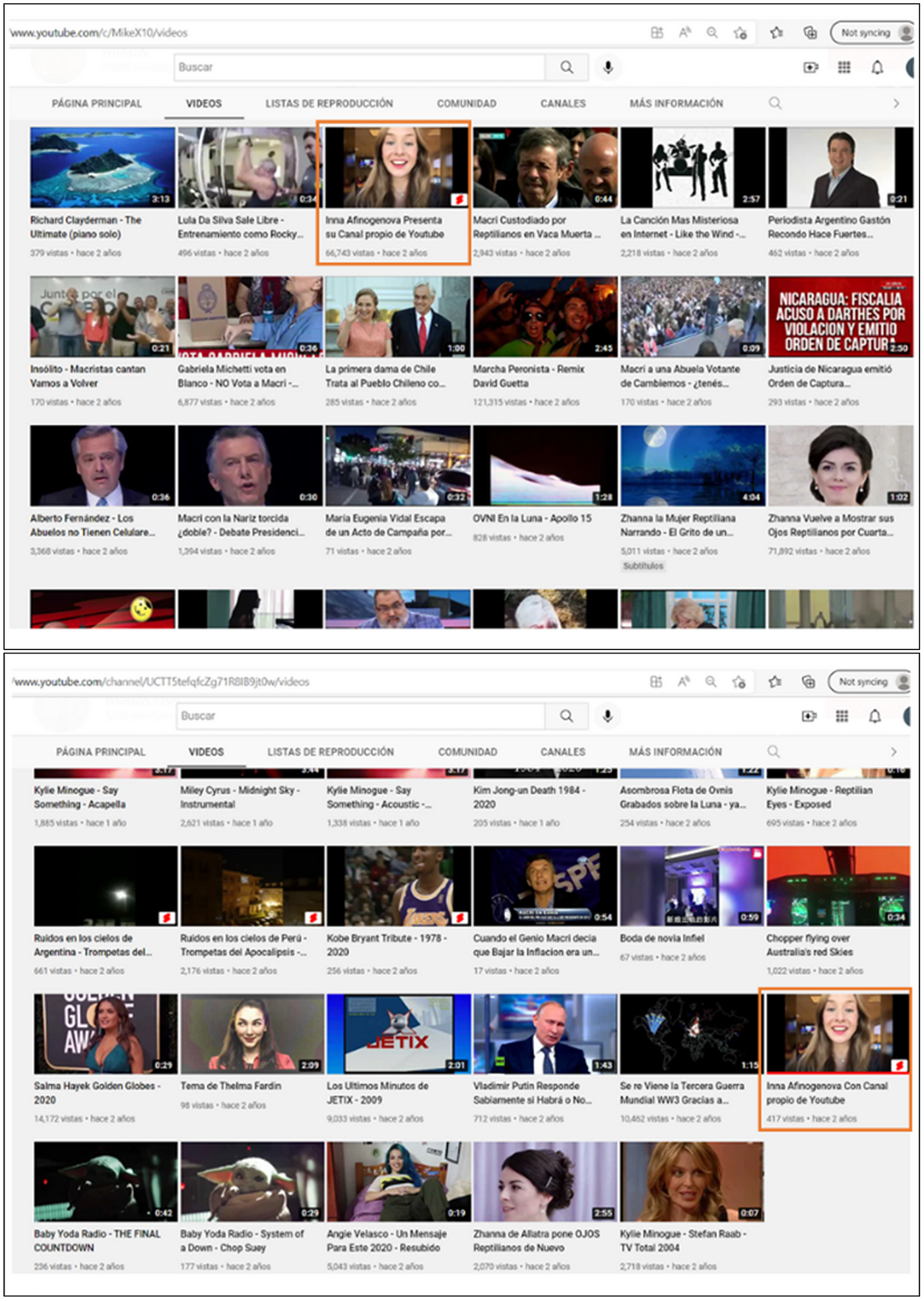
Pro-Russian and Latin American governments
The DFRLab also identified a group of six YouTube channels spreading content supporting Latin American governments, political organizations, and partisan media. Most of the channels posted press releases and propaganda before reuploading pro-Kremlin media videos in March.
The channels promoted Cuba Salva Vidas (“Cuba saves lives”), a Cuban regime-backed campaign of medical missions; Bolivia’s Luís Arce; broadcasts by the regime of Venezuela’s Nicolás Maduro; the pro-Argentinian government party Frente de Todos; Peruvian President Pedro Castillo; and a communist movement supporting Mexican President Andrés Manuel López Obrador.
As of April 20, 2022, the channel Cremallera Occidental (“Western Zipper”) was the only one of the thirty-nine channels reuploading RT en Español and Ahí les Va! videos that had been suspended.
RT en Español, Ahí les Va!, and Sputnik News all migrated to Odysee, a blockchain-driven video site, after YouTube blocked their channels. On Odysee, these Russia state-backed outlets have started rebuilding their audience. For instance, RT en Español doubled the number of subscribers in one day, following RT’s recommendation in state media to follow their accounts on this new platform.
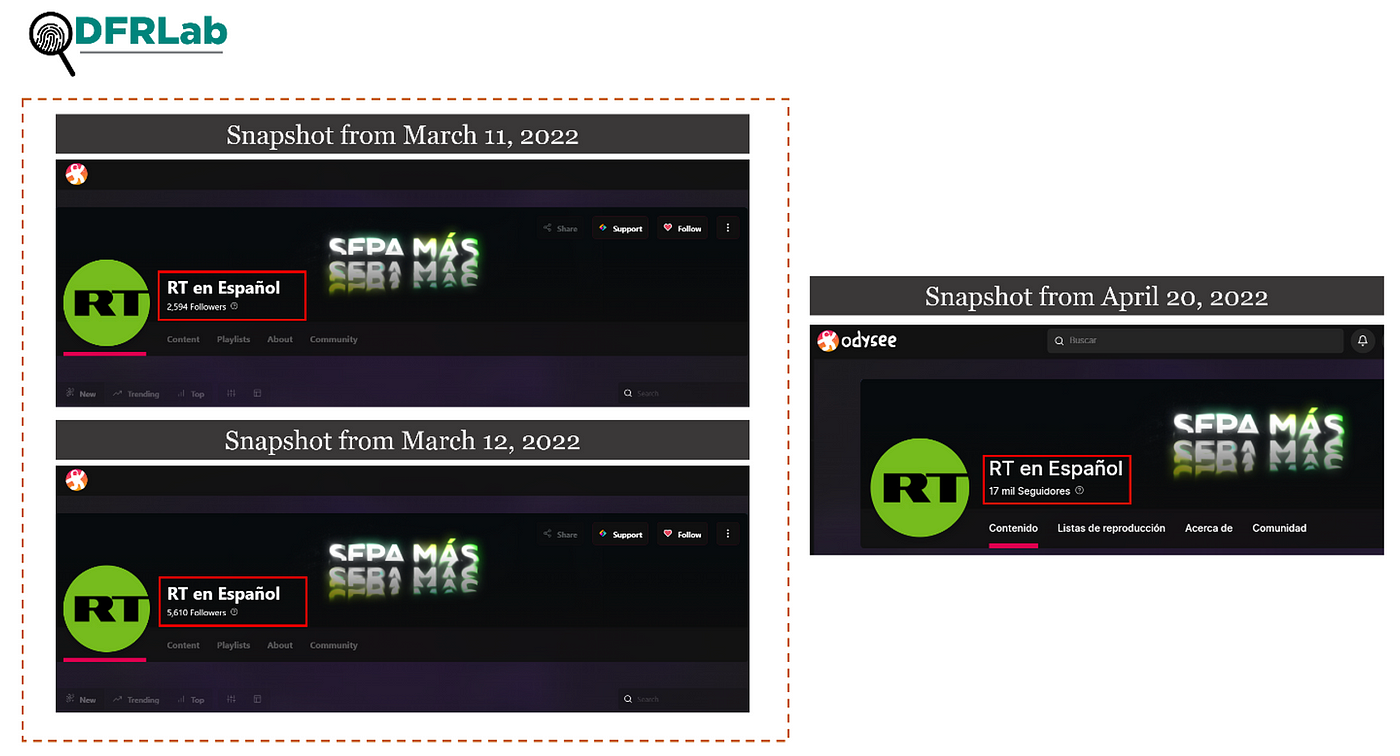
RT en Español had more than 18,000 followers on Odysee at the time of publishing, while Ahí les Va! Had more than 9,000 on the platform.
Given that YouTube’s de-platforming decision remains in place, channels re-uploading RT content are likely in violation of YouTube guidelines. The channels identified by the DFRLab have successfully amplified the de-platformed videos to grow their audiences, but they have yet to recover the same engagement levels that the main Kremlin-backed YouTube channels amassed before the ban went into effect.
This activity also suggested that users of social media platforms on which Russian state media has been blocked are still exposed to — or even seeking out — Kremlin propaganda amidst Russia’s war in Ukraine.
Cite this case study:
Daniel Suárez Pérez and Esteban Ponce de León, “Videos in Spanish created by Kremlin outlets reappear on YouTube despite restrictions,” Digital Forensic Research Lab (DFRLab), May 9, 2022, https://medium.com/dfrlab/videos-in-spanish-created-by-kremlin-outlets-reappear-on-youtube-despite-restrictions-8d2374f4bf1f.

